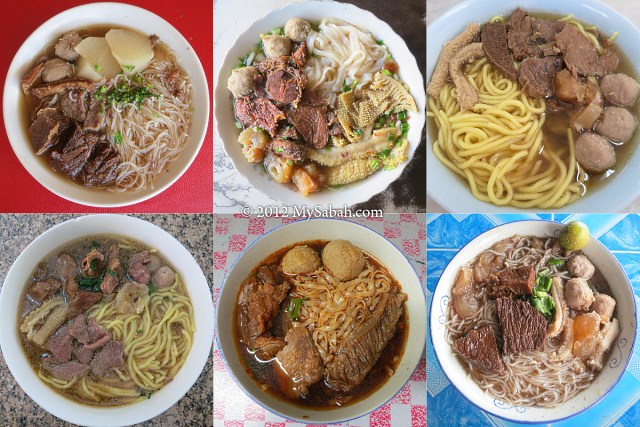Your gastronomic journey in Sabah is incomplete without Ngiu Chap (or Ngau Chap). Ngiu Chap literally means “Mixed Beef”, which is a mix of beef and its organs such as stew meat, meat ball, tendon, liver, heart, tripe, intestine, tongue, spleen and omasum, usually served with noodles in thick beef broth.
Pic: Sabah LOL Cats. World is hell without Ngiu Chap.. Just kidding.
Though Ngiu Chap is the signature and favorite noodle soup of Sabahans, not all restaurants cook very good Ngiu Chap. Some of them even add excessive Ajinomoto (MSG) into the soup. After the meal, you will be so thirsty that you need to drink gallons of water. Below is a list of Best restaurants to enjoy Sabah Ngiu Chap in different styles, recommended by the locals and I have personally tried them all. As everyone has different taste, the following list is not in any order.
1. Traditional Style – Kedai Kopi Loi Hin (来兴茶室)
Location: Donggogon, Kota Kinabalu city
Kedai Kopi Loi Hin has been making one of the best Ngiu Chap in Sabah for over 40 years. This restaurant is one of the “100 Best Coffee Shops of Malaysia” recommended by Tourism Malaysia.
» Read more about Kedai Kopi Loi Hin…
2. Hainan Style – Kedai Cheng Wah (精华冰室)
Location: Lido Penampang, Kota Kinabalu city
Opened by a Hainanese in 1961, the Ngiu Chap of Kedai Cheng Wah is still one of our favorite after 50 years. This restaurant is run by Wong family, and eat out there is like enjoying a nice meal cooked by your mom.
» Read more about Kedai Cheng Wah…
3. West Malaysia Style – Kah Hiong Ngiu Chap (家乡牛什)
Location: Luyang Hilltop, Kota Kinabalu city
Kah Hiong Ngiu Chap is the most popular Ngiu Chap of Sabah. Not only their Ngiu Chap tastes good, they also serve Ngiu Chap in variety of styles. This restaurant was featured by Axian (Jason Yeoh), in his famous food programme Taste with Jason (阿贤人情味).
» Read more about Kah Hiong Ngiu Chap…
4. Village Style – Mee Sup Pipin
Location: Donggogon, Kota Kinabalu city
Same as simple village life, we appreciate the simple and delicious Ngiu Chap of Mee Sup Pipin and they win the heart of city people too.
» Read more about Mee Sup Pipin…
5. Sabah Style – Nyuk Pau Zai (玉宝仔)
Location: Lintas Plaza, Kota Kinabalu city
When people talk about yummy Ngiu Chap, you will always hear the name “Menggatal Ngiu Chap”. Nyuk Pau started with one restaurant in Menggatal town (Kedai Kopi Nyuk Pau Baru) 25 years ago, and now it has 8 franchise in Sabah and one in West Malaysia.
» Read more about Nyuk Pau Zai…
Please let me know which Ngiu Chap you like the most. It’ll be great if you would share other Ngiu Chap that deserves a mention. I need your help to come up a “Top 10” list of best Sabah Ngiu Chap. Thank You.
Photos taken in Sabah, Malaysia Borneo
